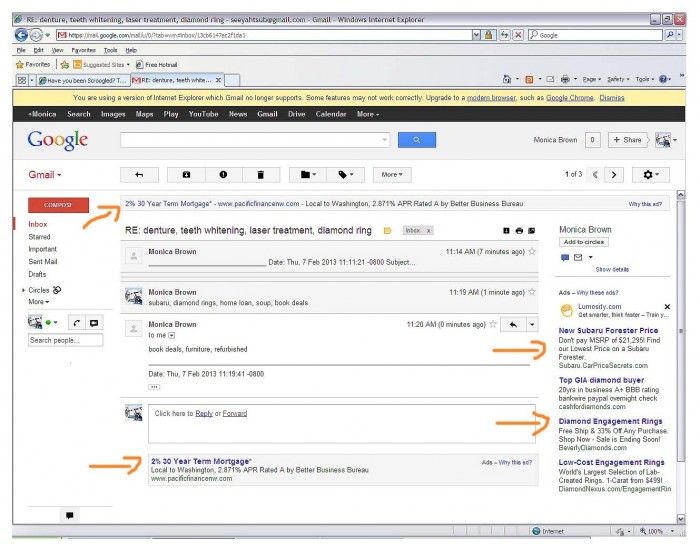By Monica Brown, Tulalip News Writer
Seattle Police are currently investigating four separate attacks on four women since Friday Feb 8th. The men have been described in their 20’s with thin to medium builds. Three of the women were able to escape with minor injuries but one was sexually assaulted. So far they have no leads as to whether the attacks are related. The Seattle times have constructed a map to view the locations of the attacks.
View the whole story here:
http://blogs.seattletimes.com/today/2013/02/third-woman-reports-attack-in-north-seattle-all-since-sunday/
Brush up on your self-defense skills. Be safe and if you don’t have to, try not to go anywhere dark and/or unfamiliar alone.
10 BEST SELF-DEFENSE AWARENESS TIPS:
Source: http://www.attackproof.com/10-best-self-defense-tips.html
These 10 tips have been circulated for quite some time now. Guided Chaos Grandmaster John Perkins and Prof. Bradley Steiner have added to the original tips. This is a small list of things to be aware of but it should serve as a start for some folks who have not studied the topic.
1. Tip from Tae Kwon Do: The elbow is the strongest point on your body. If you are close enough to use it, do!
Brad Steiner: While this is a good point, it may not be the best tip for someone unskilled in karate. It does take a bit of dexterity and training before the elbow, per se, may be employed reliably as a weapon — especially by a woman in normal attire, against a large, strong male. I would recommend driving open and extended fingers-to-eyes, or using a chinjab followed by raising the elbow of the striking arm and then eye-gouging. BITING, if grabbed hold of, and kicking like crazy, is also good. Just opening the hand and whipping a surprise handaxe to the throat is also good. Head butting is effective. I would prefer these methods because, for the complete novice, they are more likely to be delivered with sufficient force and effectiveness to facilitate escape.
2. Learned this from a tourist guide. If a robber asks for your wallet and/or purse, DO NOT HAND IT TO HIM. Toss it away from you…. Chances are that he is more interested in your wallet and/or purse than you, and he will go for the wallet/purse. RUN LIKE MAD IN THE OTHER DIRECTION!
Brad Steiner: Excellent general advice! Additionally, keeping a “throw away wallet” that is stuffed with junk or play money, etc. but that seems authentic, can be utilized with this ploy. While avoidance and escape is the best tactic, when possible, there may be contexts in which an appropriately prepared individual can feign compliance, reach for a handgun (or even a knife) under the guise of reaching for a wallet, and then . . . well, you can figure it out.
[Editor’s Note: There may be some risk however if you’re dealing with an angry psycho. It is possible that by throwing the wallet, he may just blow you away…and then casually retrieve the wallet. That being said, if he is that species of beast, he may have shot you no matter how compliant you were. All the more reason to never go with the attacker to crime scene #2 and to attack the attacker.]
3. If you are ever thrown into the trunk of a car, kick out the back tail lights, stick your arm out the hole and start waving like crazy. The driver won’t see you, but everybody else will. This has saved lives.
Brad Steiner: With modern vehicles it is possible to extricate oneself from inside the trunk of a car if you keep a cool head. HOWEVER: the smart tactic is never to permit oneself to be locked inside a vehicle trunk in the first place. Pretending to comply, then suddenly knocking any weapon aside and attacking the abductor’s eyes/throat and then running, is — I think — a better tactic that offers a greater chance of survival, on balance. Obviously the abductor does not wish to kill the person whom he orders into the vehicle’s trunk, right away. I have always been a powerful advocate of NEVER permitting oneself to be taken from a primary crime scene, if humanly possible to offer resistance. Like escape-and-evasion in military contexts, THE SOONER AND FASTER ESCAPE IS UNDERTAKEN, THE BETTER! The escape from a vehicle trunk is good counsel; nonetheless, should one find oneself thus trapped, for whatever reason).
4. Women have a tendency to get into their cars after shopping, eating, working, etc., and just sit (doing their checkbook, making a list, etc.) DON’T DO THIS! A predator may be watching you, and this is the perfect opportunity for him to get in on the passenger side, put a gun to your head, and tell you where to go. AS SOON AS YOU GET INTO YOUR CAR, LOCK THE DOORS AND LEAVE.
If someone is in the car with a gun to your head DO NOT DRIVE OFF, Repeat: DO NOT DRIVE OFF! Instead, gun the engine and speed into anything, wrecking the car. Your Air Bag will save you. If the person is in the back seat they will get the worst of it. As soon as the car crashes bail out and run. It is better than having them find your body in a remote location.
(Steiner’s comment: Good advice. Also: Always lock your vehicle and secure it when getting gas and entering the office to pay for the gas. Criminals have been known to enter vehicles and lie in wait, in the back, for the woman to come back to her vehicle and drive away. THEN, they overtake their victim who is helpless. Also: KEEP YOUR GAS TANK FULL. Never stop at stations where there are odd individuals standing, or at stations in questionable neighborhoods. Do not fill your gas tank at night. Keep your vehicle well supplied — go to brightly lit gas stations in good areas, and in broad daylight. Note: I am not 100% sure of the “drive into something” advice with a gun to your head. One does not wish to cause the weapon to go off due to the criminal’s being shocked, or simply reflexively firing as the vehicle purches. On the other hand, I can see how this tactic could save a life.)
5. A few notes about getting into your car in a parking lot, or parking garage:
a.) Be aware: look around you, look into your car, at the passenger side floor , and in the back seat.
b.) If you are parked next to a big van, enter your car from the passenger door. Most serial killers attack their victims by pulling them into their vans while the women are attempting to get into their cars.
c.) Look at the car parked on the driver’s side of your vehicle, and the passenger side… If a male is sitting alone in the seat nearest your car, you may want to walk back into the mall, or work, and get a guard/policeman to walk you back out. IT IS ALWAYS BETTER TO BE SAFE THAN SORRY. (And better paranoid than dead.)
(Steiner’s comment: THIS IS PERFECT ADVICE! WE HAVE BEEN TELLING THIS TO STUDENTS FOR DECADES! FOLLOW IT!)
6. ALWAYS take the elevator instead of the stairs. Stairwells are horrible places to be alone and the perfect crime spot. (This is especially true at NIGHT!)
(Steiner’s comment: This might be construed in the opposite, as well. Elevators can be risky. Personally, we have heard of more attacks inside elevators than we have heard of attacks in stairways. However, there is to the point made. We urge serious caution at all times, and being prepared to fight back ferociously and using the element of surprise — always with a WEAPON, if this can be done lawfully.)
7. If the predator has a gun and you are not under his control, ALWAYS RUN! The predator will only hit you (a running target) 4 in 100 times; and even then, it most likely WILL NOT be a vital organ. RUN, preferably in a zig-zag pattern!
(Steiner’s comment: GREAT ADVICE! Again, we have urged this for decades as a good tactic, and we see no reason to change the counsel. In fact, it is NOT likely that an armed criminal will in fact fire at you at all. He obviously did not wish to fire when he had you at gun point; and he can see that raising an alarm by firing when you run away will only attract attention to himself with little chance of hitting you.)
8. As women, we are always trying to be sympathetic: STOP it may get you raped, or killed. Ted Bundy, the serial killer, was a good-looking, well educated man, who ALWAYS played on the sympathies of unsuspecting women. He walked with a cane, or a limp, and often asked ‘for help’ into his vehicle or with his vehicle, which is when he abducted his next victim.
(Steiner’s comment: RIGHT! Again, we have been urging this for many, many years, and it is good advice!)
9. Another Safety Point: Someone just told me that her friend heard a crying baby on her porch the night before last, and she called the police because it was late and she thought it was weird. The police told her ‘Whatever you do, DO NOT open the door….’ The lady then said that it sounded like the baby had crawled near a window, and she was worried that it would crawl to the street and get run over. The policeman said, ‘We already have a unit on the way, whatever you do, DO NOT open the door.’ He told her that they think a serial killer has a baby’s cry recorded and uses it to coax women out of their homes thinking that someone dropped off a baby. He said they have not verified it, but have had several calls by women saying that they hear baby’s cries outside their doors when they’re home alone at night.
(Steiner’s comment: VERY, VERY VALUABLE AND IMPORTANT ADVICE!!!!)
10. Water scam! If you wake up in the middle of the night to hear all your taps outside running or what you think is a burst pipe, DO NOT GO OUT TO INVESTIGATE! These people turn on all your outside faucets full blast so that you will go out to investigate and then attack. This was mentioned on America’s Most Wanted when they profiled the serial killer in Louisiana.
(Steiner’s comment: Again — very, very valuable advice!)











